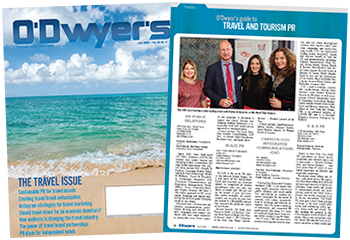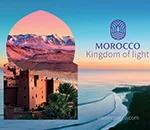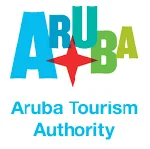 Lou Hammond Lou Hammond |
Whether searching for a solo getaway or family reunion destination, consumers are driving the bus to make travel decisions. A recent survey found that only 28 percent of consumers turn to magazines and newspapers to discover new brands while 53 percent rely on friends and family and 42 percent Google.
While these statistics may seem grim for PR professionals, it’s actually great news.
As an agency representing 20-plus destinations spanning cities, states, counties and countries across the globe, LHG is an industry leader in destination marketing and has a steady finger on the pulse of what makes travelers tick.
 |
| This article is featured in O'Dwyer's Jul. '19 Travel & Int'l PR Magazine. |
Bloomberg recently reported that Warren Buffett is “pessimistic on the newspaper industry at a time when public relations specialists are increasingly outnumbering journalists.” I can’t say I’m surprised. The six-to-one ratio of publicists to reporters is startling, creating a need for a specialist PR professional to break through the clutter.
The above spotlights both a challenge and an opportunity for independent hotels longing for quality media coverage and for the overabundance of PR professionals tasked with securing it.
Instead of considering media coverage the end-all-be-all of public relations success, smart marketers focus on creating lifelong brand ambassadors who will evangelize a destination via word of mouth and social media. This approach requires a shift in the way PR professionals tackle media relations, but, when done correctly, pays big dividends.
To begin, destinations should take a hard look at their content marketing strategy and diversify efforts across earned, paid, shared and owned media to ensure each spoke of the marketing wheel complements the others. Think of this wheel as the framework for a successful campaign and content as the fuel that powers the wheel.
Here are four ways to create lifelong brand ambassadors through a successful content marketing plan:
Start with the traveler and work back
Before proactively pushing out content to potential visitors, destinations must first define their audience through robust customer personas. To do this, start with your ideal lifelong brand ambassador and work backward. What are they reading? Who are they following? How do they consume information? Americans spend an average of 5.4 hours each day on their smart devices, so practitioners must pinpoint the best ways to get in front of their primary audience to get a piece of the pie. Monitoring age, gender, household income and geographic locations through Google Analytics is a great place to start. From there, you can also view referral traffic to see who is coming from news outlets versus social media or what key words people are searching to find your brand. Breaking down this demographic information is the first step to narrowing down the primary channels of communication and will direct your strategy moving forward.
Create valuable content
If content is the fuel that powers the marketing wheel, PR specialists must pay careful attention to the type of fuel they are infusing into their strategies. Just as gassing up a car with the wrong fuel type can cause serious damage, destinations must only create and disseminate content that is both relevant and valuable to the customer.
Now that you know your audience front and back, you must create targeted messaging that will resonate. Because today’s consumer is inundated with brand messages, yours must be able to neatly communicate your destination’s unique value proposition. What can you say that no one else can? What are the leading highlights that set you apart from other destinations or attractions? Your destination’s unique value proposition will serve as the tent poles for your content strategy, so it’s imperative that you nail down both the target audience and key messages. From there, ensure that these key messages come across loud and clear in your content — whether it’s a blog, social, email or interview with a journalist.
An increase in fans, followers and web traffic is a good indication that steps one and and two have been successful. Once this is established, it’s time to move from discovery mode to conversion mode.
Rise through the Google ranks
Now that you’ve reached your target audience with relevant and valuable content through traditional or social media, you must now make it easy for them to find your website. Since we know that 42 percent of consumers turn to Google to discover brands, a high search engine ranking is paramount. Google’s algorithm is changing more and more every day, but we do know a few key things about what types of websites it prioritizes. The secret to a high-ranking site is — you guessed it — good content!
Websites that regularly publish original, relevant and valuable content will rise through the search engine ranks. If Google sees that website visitors are leaving your pages quickly (as seen through a high bounce rate), you’ll be dinged. If Google sees that you are not refreshing your web content, you’ll also be dinged. Google prioritizes content by how fresh it is and how long a site keeps visitors before they bounce, so moving up in search engine rankings is a top way to determine success in this step.
Exceed expectations
Once a customer makes a purchasing decision, brands are one step closer to creating lifelong ambassadors. The only thing standing between a purchase and brand loyalty is a delightful experience. This experience must validate all the expectations that a consumer has made during the discovery and conversion phases. As such, a company must train all guest-facing employees to be the face and voice of the company. Our agency utilizes a tool called a “message house” to ensure key messages are communicated during guest interactions. Once a visitor leaves your destination, smart brands use content to stay engaged through email and social media, providing a two-way dialogue to ensure feedback is heard and laying the groundwork for a future visit.
While converting a passive explorer into a lifelong brand ambassador is no easy feat, it can be done through captivating content deployed across earned, paid, shared and owned media. From discovery to conversion to engagement, PR pros must infuse strong content at every point in the marketing funnel. And after some 35 years in this industry, I’m proud to report that good content is still king.
***
Lou Rena Hammond is Chairman and Founder of Lou Hammond Group, with offices in New York, Charleston, Miami, Los Angeles, Houston and Denver.


 Weber Shandwick is providing PR and marketing communications services to the Moroccan National Tourist Office in New York.
Weber Shandwick is providing PR and marketing communications services to the Moroccan National Tourist Office in New York. Finn Partners has filed its six-month contract with the Bahamas Ministry of Tourism, Investments & Aviation, which is worth $240K.
Finn Partners has filed its six-month contract with the Bahamas Ministry of Tourism, Investments & Aviation, which is worth $240K. Weber Shandwick wrapped up its work for the Ministry of Bahamas at the end of 2023.
Weber Shandwick wrapped up its work for the Ministry of Bahamas at the end of 2023. The Aruba Tourism Authority is boosting its budget 29.4 percent to $2.2M at Zeno Group, according to its 2024 contract, effective Jan. 1.
The Aruba Tourism Authority is boosting its budget 29.4 percent to $2.2M at Zeno Group, according to its 2024 contract, effective Jan. 1. As inflation continues to impact spending, consumers are revisiting their list of what they’re willing to spend more of their money on. Luckily for those in the travel industry, experiences seem to be trending up on the “splurge” list.
As inflation continues to impact spending, consumers are revisiting their list of what they’re willing to spend more of their money on. Luckily for those in the travel industry, experiences seem to be trending up on the “splurge” list. 


 Have a comment? Send it to
Have a comment? Send it to 
No comments have been submitted for this story yet.